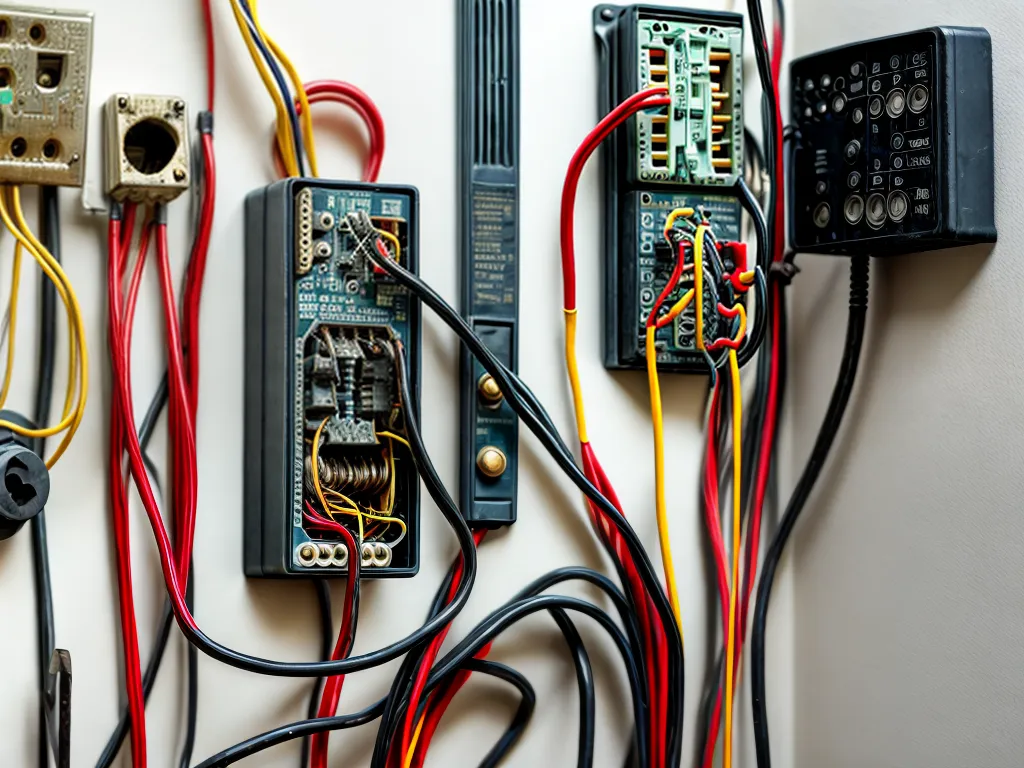
How to Wire Your Home Like They Did in the Old Days
Introduction
Wiring a home can be a daunting task, but doing it the old-fashioned way can provide a sense of accomplishment and nostalgia. Before modern electrical codes and wiring methods, homes were wired in a more rudimentary yet clever way. Follow along as I walk through the basics of wiring a home using antiquated materials and techniques. We'll cover everything from selecting conductors to installing switches and outlets. While not up to modern safety codes, this can be an engaging DIY project for those wanting to get a taste of vintage home wiring.
Selecting Conductors
The first step is choosing the right conductors, or wires. Early electrical systems used a few different options:
-
Cloth-insulated wire - This wire has a cloth ribbon wrapped around the conductor for insulation. Common types were cambric and rubber-filled cambric.
-
Knob and tube wiring - These wires were encased in rubber/cloth insulation and supported along the length by ceramic knobs.
-
Armored cable (BX) - An early form of metal-clad cable with the conductors wrapped in paper insulation inside a flexible steel tube.
I'd recommend using reproduction cloth-insulated wire if you want the true old-fashioned look. Rubber-insulated wire could also substitute for an easier installation. The wiring can range from 14 to 10 AWG in size depending on the circuit amperage. Keep safety in mind and use GFCI outlets with vintage wiring installations.
Running Conductors
During the knob and tube era, wiring was run through open joist and stud bays, following the simplest path from point A to B. To replicate this look:
-
Use ceramic knobs with attachment nails to hold the wire in place along its run
-
Maintain at least 1 inch separation between conductors
-
Allow several extra inches for slack at connections
-
Run lines as directly as possible between fixtures
-
Keep wiring completely separated from any exterior wall surfaces
Other than the knobs, the conductors can be run loose through the bays. Avoid kinking or putting tension on the cloth insulation.
Installing Devices
The key devices in a knob and tube system are the switches, outlets, and light fixtures. These are wired into the system through simple splicing:
-
Strip back 2-3 inches of wire insulation
-
Twist bare conductor ends together
-
Secure with electrical tape or wire nuts
-
For ceiling fixtures, use porcelain sockets wired directly to conductors
-
Wall switches and outlets just screw or clip onto the wires
No device boxes are used - the splices hang openly from the wires. Make sure all connections are tight and well-insulated.
Incorporating Fuses
Fuses are necessary to protect the wiring from excessive current. Some options for fuse boxes:
-
Link fuse style - Fuses hanging openly on conductors
-
Plug fuse style - Fuses enclosed in porcelain bases
-
Enclosed panel box - Fuses behind a metal panel
Aim for a fuse amperage about 25% higher than the circuit current. This gives some leeway before they blow.
Place fuses at the start of each circuit to protect all the downstream wiring. Knob and tube systems are often limited to 15 or 20 amp circuits due to the wire insulation.
Finishing Touches
To complete the vintage look:
-
Use antique-style light switches, outlets, and cover plates
-
Add cloth-wrapped wire loom to neaten the look of runs
-
Install porcelain cleat insulation where wires contact framing
-
Employ vintage lighting like Edison bulbs, oil lamps, or gas fixtures
-
Include only the minimal wiring needed for the space
The end result is a wiring system that looks straight out of the early 1900s! With some diligence and safety considerations, you can bring a vintage wired aesthetic to your home.